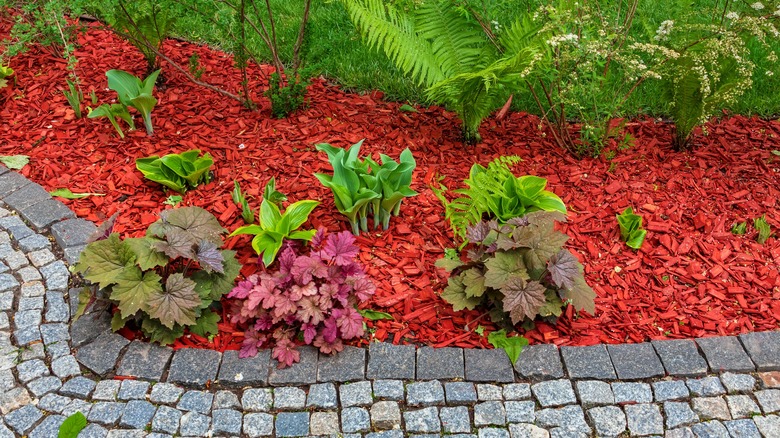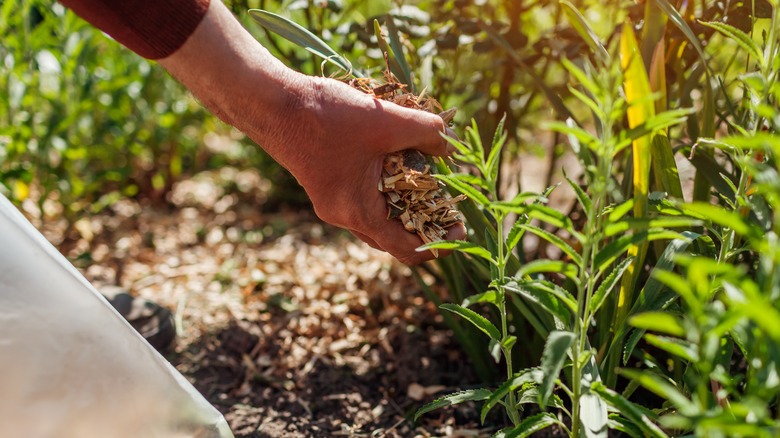It's Time To Retire This Bold Landscaping Trend For A Better Alternative
As the weather starts to cool and winter draws closer, you may notice newly mulched landscaped beds around your neighborhood. These dressings aren't just for looks — they are a practical and protective feature that can help protect your garden plants during winter. They also suppress weeds in the springtime to help your plants produce beautiful blooms.
White rocks or color-enhanced wood mulch have been popular options since they can instantly boost curb appeal and are long-lasting. They can add a pop of color to a yard and help landscaped areas stand out. But they also come with drawbacks. They can lend an artificial, unnatural appearance to a landscape, a look you might not prefer these days, as more organic, nature-friendly looks are trending. Even worse, while most wood-mulch dyes aren't toxic, some can contain harmful additives. In addition, wood mulches can be composed of recycled wood products like pallets, which may contain harmful chemicals that you might not want in your garden. Brightly colored mulches also break down more slowly than other types of mulch, which steals nitrogen from the surrounding plants. White rocks can negatively impact the soil's temperature and pH.
As homeowners seek more eco-friendly options, natural and organic mulches are being used more frequently. These can make your yard look fabulous while still keeping weeds to a minimum and protecting your plants. Not to mention, you can rest easy knowing that your yard looks great and is receiving essential nourishment without potentially harming the local ecosystem. By making a thoughtful decision about the mulch you use, you can have healthier soil, thriving plants, and a yard that benefits both you and the surrounding ecosystem.
Natural mulch and rock alternatives to consider
If you love the look and durability of white stones and want to use an eco-friendly product, you can opt for natural pea gravel instead of dyed landscape rock. A river rock that's been rounded and smoothed by water, pea gravel is naturally free of artificial colorants. Often used for pathways, garden beds, and around plants to improve drainage, it can be a practical choice for yards in dry regions where maintaining a lush, green lawn might be costly or resource-intensive.
Similarly, natural brown mulch that hasn't been treated with color additives can give your yard a warm, organic look while just as effectively protecting your garden. Each natural mulch offers its own unique characteristics. For example, cedar mulch starts out with a rich honey tone and gradually weathers to a soft gray, while pine chips feature a pleasing pine scent. Besides wood, some other natural mulching options you could consider include evergreen needles, shredded leaves, or even grass clippings, each bringing its own texture, color, and benefits to your garden.
It's essential to research your options before selecting a natural mulch, as each has its own benefits and drawbacks. For example, shredded leaves naturally decompose and enrich the soil, but they won't have the same polished appearance as wood chips. Pine needles, while long-lasting and slow to decompose, can be more acidic than other mulches, which may affect the soil pH over time, potentially harming your plants. When choosing the best type of mulch for your garden, though, it's not difficult to achieve a more natural look while still providing essential safeguards to help your garden thrive.

